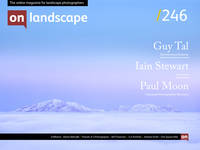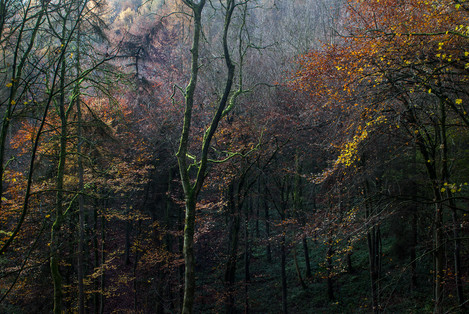Featured Photographer Revisited

Paul Moon
Paul Moon is a landscape photographer from East Yorkshire and has spent 18 years documenting the Yorkshire Wolds - the UK's most northerly mainland chalk upland. It is known for its steep sided dry chalk dales which spread for miles throughout the area.

Michéla Griffith
In 2012 I paused by my local river and everything changed. I’ve moved away from what many expect photographs to be: my images deconstruct the literal and reimagine the subjective, reflecting the curiosity that water has inspired in my practice. Water has been my conduit: it has sharpened my vision, given me permission to experiment and continues to introduce me to new ways of seeing.
It’s easy to think that if you keep going back to the same place(s) that (i) you are missing out and (ii) you will run out of ideas. There’s not a lot we can do if you suffer from FOMO but we can talk to someone who can show you that the latter should not be feared, so for this issue we’re catching up with Yorkshire-based Paul Moon. Speaking from personal experience, there is a freedom that comes from following your curiosity and concentrating your focus, and an opportunity to both discover things that you would have otherwise never seen and to develop an individual portfolio.
It’s hard to believe that a decade has passed since Tim first spoke to you in 2011, though we did catch up over some of your images in 2015. How long have you now been photographing the Yorkshire Wolds? How has your relationship with it evolved?
Hello Michela and thanks for letting me speak about my journey on the Wolds and show you some of my new work. Time is moving very quickly and I’m also surprised it was that long ago since me and Tim first spoke about my images!
I’ve been photographing the Wolds for around 18 years. I started when I had a 35mm film camera but it was only when I first started using digital that I really began exploring the dry chalk dales that are a feature of the area. That was in 2004. I had an OS map showing the areas of access land I could visit and I’d go and wander around as many as I could trying to find a way to make images of the amazing topography and ecology I was seeing.
The upper areas of the Wolds are quite difficult to photograph. They stretch into the distance as far as the eye can see and finding a position to photograph these views is hard work. You also need lots of drama in the sky when you photograph the Wolds upland. That’s why I’ve ended up working the valleys. The views through and along them are easier to work with compositionally and, as they are a unique feature of the area, it makes more sense to document them.
Most of the valleys are hidden from view when you’re crossing the Wolds upland. Occasionally there are dips as you travel along the roads and these are the tips of the valley systems. Once you start to walk away from the roads you soon come across and drop into these twisting steep-sided dry dales and valleys.


